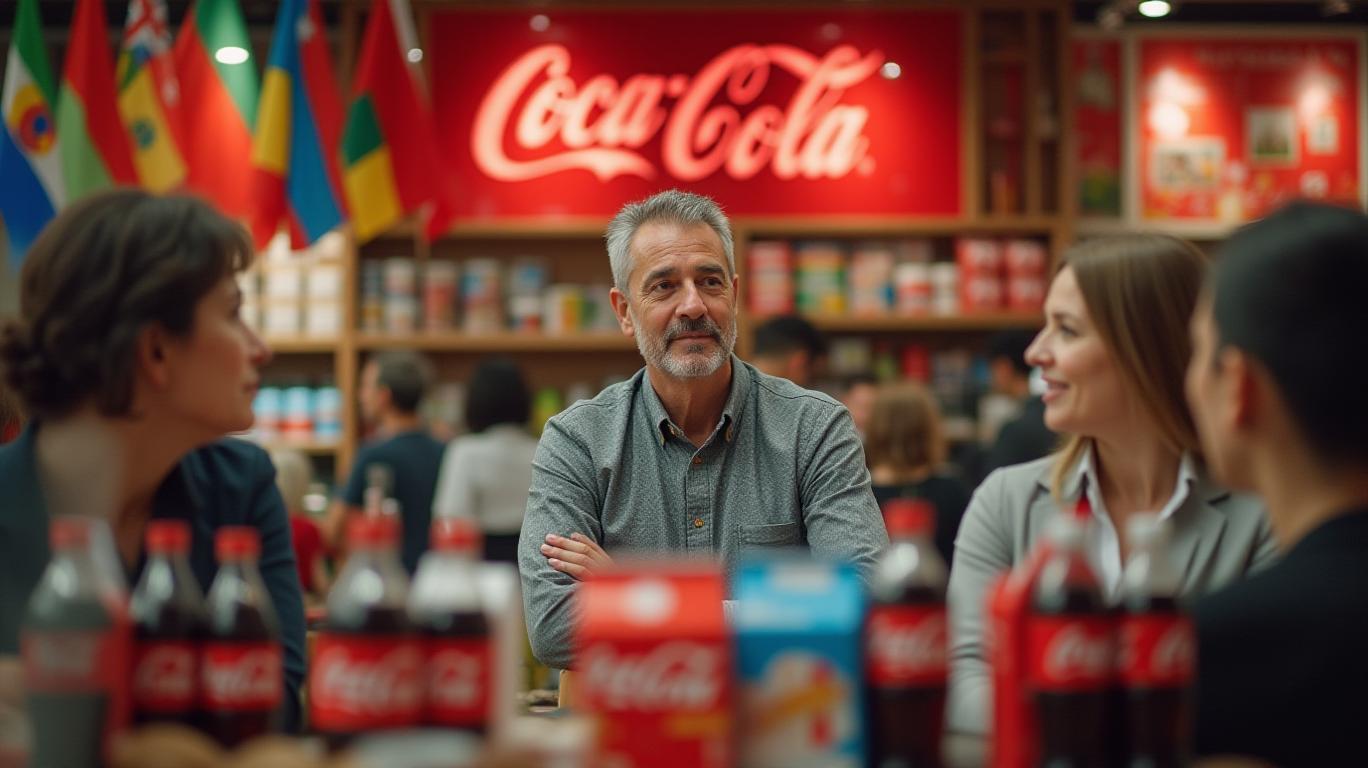Coca-Cola Navigates Tariff Headwinds with Resilience, But Global Uncertainties Linger
Coca-Cola’s first-quarter results for 2025 underscore its ability to navigate a world of trade tensions and economic volatility—yet the beverage giant remains cautious about the path ahead. Despite a 2% year-over-year revenue decline to $11.1 billion, the company beat earnings expectations with EPS of $0.73, while reaffirming its full-year 2025 outlook of 2% to 3% EPS growth. This resilience, CEO James Quincey emphasized, stems from its “primarily local” supply chains and pricing discipline—key advantages as global tariffs loom.

The Tariff Shield: A Localized Advantage
Coca-Cola’s bottling operations, mostly owned and operated domestically in key markets, have insulated it from the worst effects of global trade disruptions. Unlike competitors reliant on cross-border shipments of raw materials, Coca-Cola sources ingredients and bottles its products locally in 90% of markets. This model limits exposure to tariffs on aluminum, for instance, as it can pivot to plastic containers if needed. The company’s Q1 results reflect this: while revenue was hit by a 5-percentage-point drag from currency fluctuations, volume and pricing gains offset declines in mature markets like North America.
In contrast, rival PepsiCo recently cut its 2025 guidance, citing tariff-driven cost pressures and regulatory uncertainty. Analysts at JPMorgan noted Coca-Cola’s “blue-chip barometer” status in the consumer staples sector, attributing its relative stability to its low tariff exposure and inelastic demand for beverages.
Geopolitical Gains and Losses
Coca-Cola’s Q1 performance highlights a stark geographic divide. Emerging markets like India, China, and Brazil delivered 2% volume growth, buoyed by price hikes and new product launches (e.g., Coca-Cola Zero Sugar’s 14% surge). Europe, the Middle East, and Africa also grew 3%, while Latin America stagnated.
North America, however, bucked the trend, with a 3% volume decline despite an 8% boost from price and mix adjustments. This underscores the challenge of sustaining growth in mature markets amid inflation and shifting consumer preferences.
The Bottom Line: Growth Amid Choppiness
Coca-Cola’s 2025 outlook hinges on its ability to balance global risks with localized agility. While it expects tariffs to remain “manageable,” currency swings and regional demand fluctuations could test its margins. Analysts at CFRA point to Coca-Cola’s 15% year-to-date stock gain—outpacing the Dow’s 7% rise—as a testament to its defensive appeal. Yet the company’s Q1 adjusted revenue dip to $11.22 billion (a 0.1% decline) signals caution.
The path forward is uneven. Emerging markets will likely drive growth, while developed markets face headwinds. Coca-Cola’s decision to prioritize high-margin sparkling beverages and zero-sugar variants—already accounting for 16% of volume—could provide a buffer. Still, the company’s net income rose just 5% to $3.3 billion in Q1, highlighting the limits of pricing power in an inflationary environment.
Conclusion: A Steady Hand in a Volatile World
Coca-Cola’s 2025 narrative is one of cautious optimism. Its localized operations and disciplined pricing have insulated it from tariff shocks, allowing it to maintain its EPS growth target. With a 2% volume rise in key markets and a 14% spike in Coca-Cola Zero Sugar, the company is capitalizing on trends that favor convenience and health-conscious choices.
Yet risks persist. North America’s volume slump and currency headwinds—responsible for 5% of Q1’s revenue drag—signal vulnerabilities. Competitors like PepsiCo’s struggles also highlight that no company is fully immune to global headwinds.
For investors, Coca-Cola remains a stalwart in the consumer staples sector, offering modest but steady returns. Its 15% YTD stock performance and 2.6% dividend yield reinforce its role as a defensive play. But as Quincey noted, “choppiness” is inevitable. In a world where trade tensions and economic uncertainty are constants, Coca-Cola’s localized resilience may be its greatest differentiator—and its best hope for growth.

Comments
No comments yet